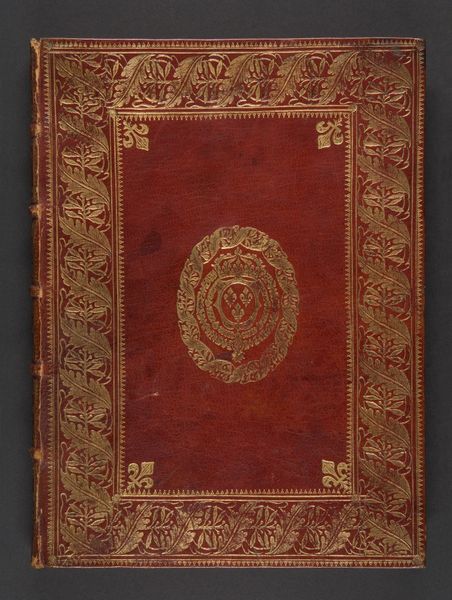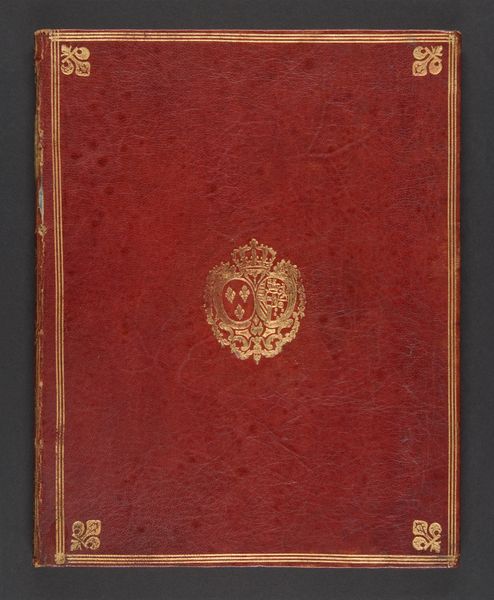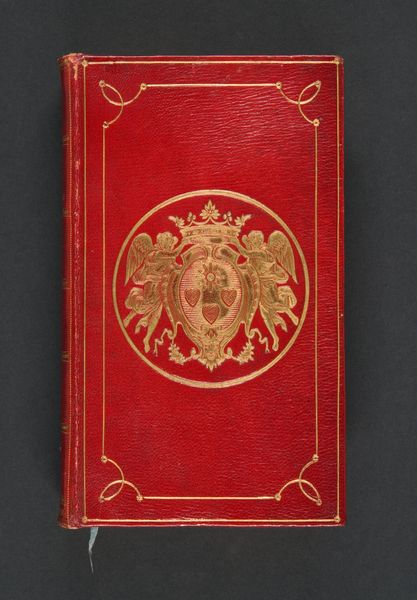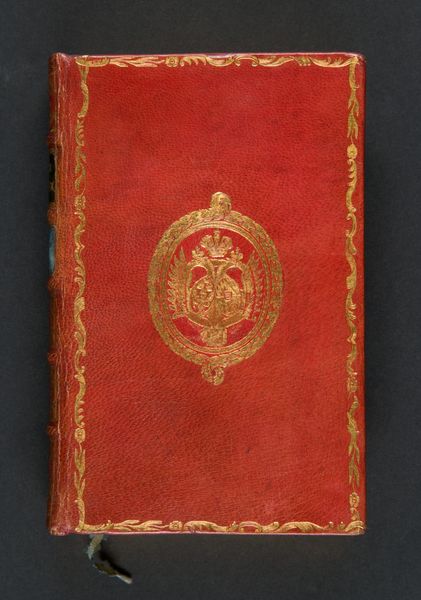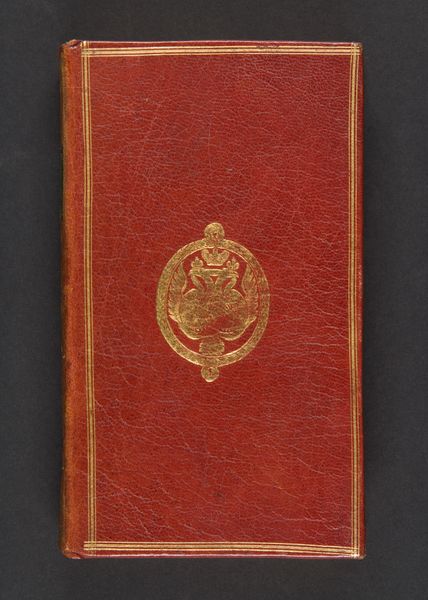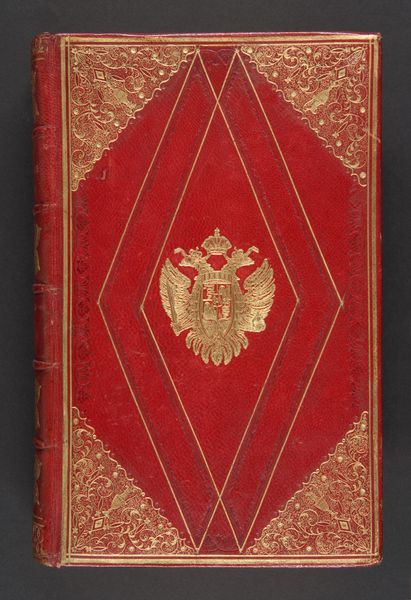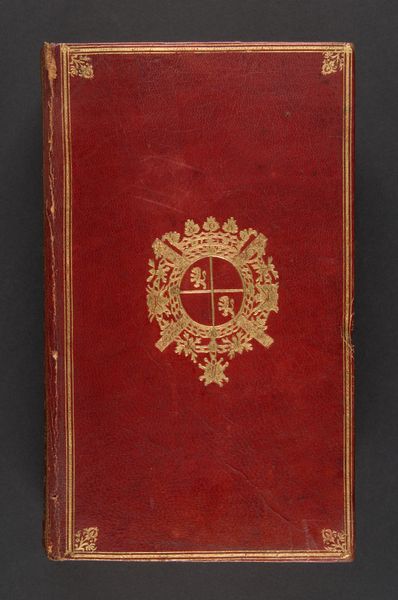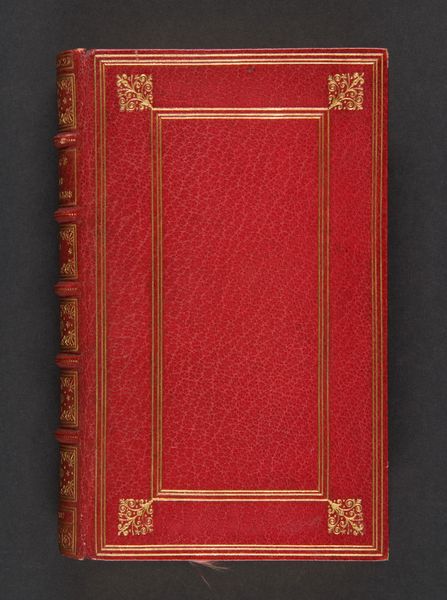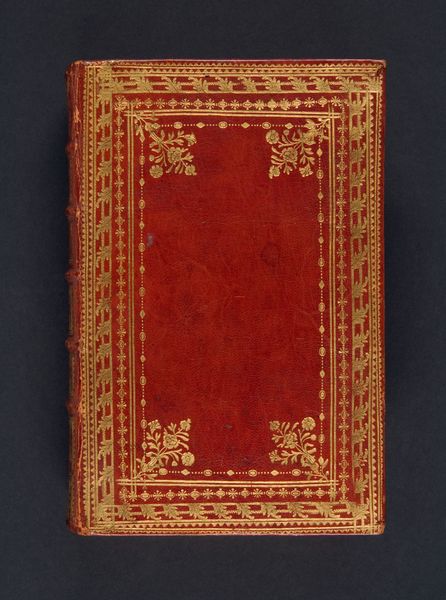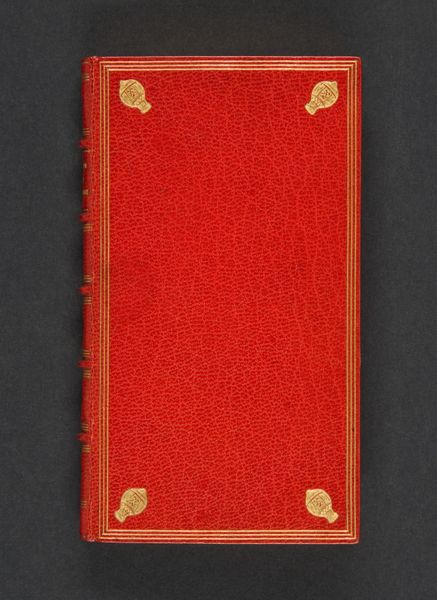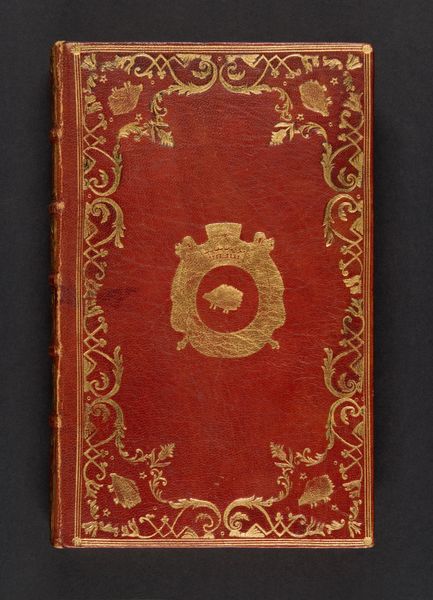
lithograph, print, relief
#
lithograph
# print
#
book
#
relief
#
geometric pattern
#
geometric
#
decorative-art
Dimensions: 5 1/16 x 3 7/16 x 11/16 in. (12.9 x 8.7 x 1.7 cm)
Copyright: Public Domain
Curator: This is an interesting little volume entitled "The Odd-Fellows Minstrel" from 1848, attributed to Paschal Donaldson, currently residing here at the Minneapolis Institute of Art. You can see it is a relief lithograph, a relatively inexpensive method of mass production at the time. What do you think of it? Editor: Immediately, it's striking how… compact it is. It gives the impression of a treasured object, carefully sized for private use, maybe even for carrying around. But there’s a visual tension in the crimson book cloth contrasted with the gold decorative details. It feels very formal, with its geometric, almost Masonic, patterning. Curator: Yes, I think your reading is spot on. The texture and the embossed decorations suggest the mechanization and division of labor involved. Rather than emphasizing artistic individuality, the design focuses on replication. This kind of design signaled an aspiration toward a bourgeois respectability and middle-class values, while also connecting them to older traditions. Editor: Considering the book's association with the Odd Fellows, a fraternal organization, what sociopolitical role did it play? Did this minstrel collection help construct or contest existing social hierarchies in 1840s America, particularly concerning issues of race and class through music? Curator: Exactly. Looking closer, it becomes obvious that its materiality suggests something quite intentional about access, readership, and ultimately, what kind of musical expression gets disseminated. The book embodies the Industrial Revolution’s impact on cultural production. What sort of stories was this cheap and readily available little red volume spreading, and to whom? Editor: Well, the title, “Minstrel,” throws up red flags immediately, as minstrelsy was rife with racist caricature. In light of the symbolism on the cover — the all-seeing eye and the linked rings— one is prompted to think critically about power, brotherhood, and potentially exclusion. Were these songs perpetuating harmful stereotypes under the guise of harmless entertainment? Curator: That’s a vital question. Examining its method of production allows us to unpack its purpose as a vehicle for entertainment but also, inevitably, for disseminating a certain social and racial vision. Editor: It makes you wonder how something as seemingly benign as a songbook could have actively shaped, even harmed, societal perceptions. It certainly gives us a lot to unpack. Curator: Definitely, and recognizing these objects not just for their aesthetic value but for their capacity to shape history through their very manufacture... Editor: …is a stark reminder that art isn't neutral. It's embedded in webs of power, production, and social meaning. Thanks for shedding some light on this unusual little artifact.
Comments
No comments
Be the first to comment and join the conversation on the ultimate creative platform.
